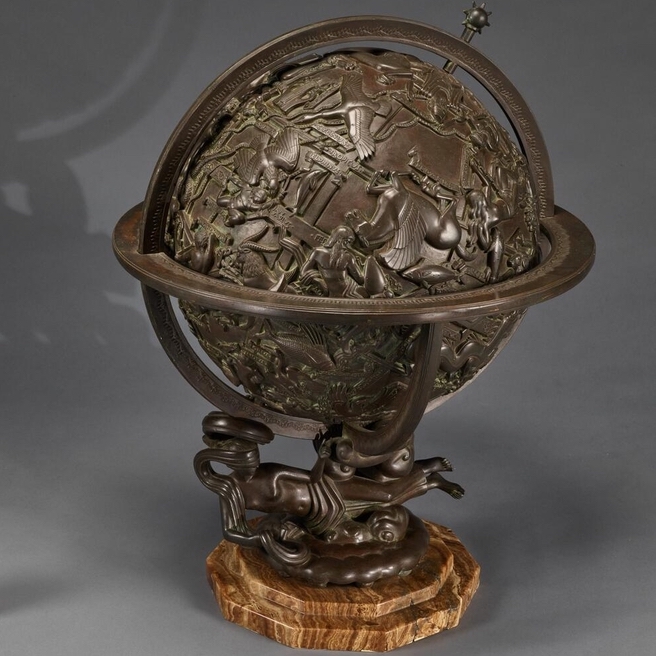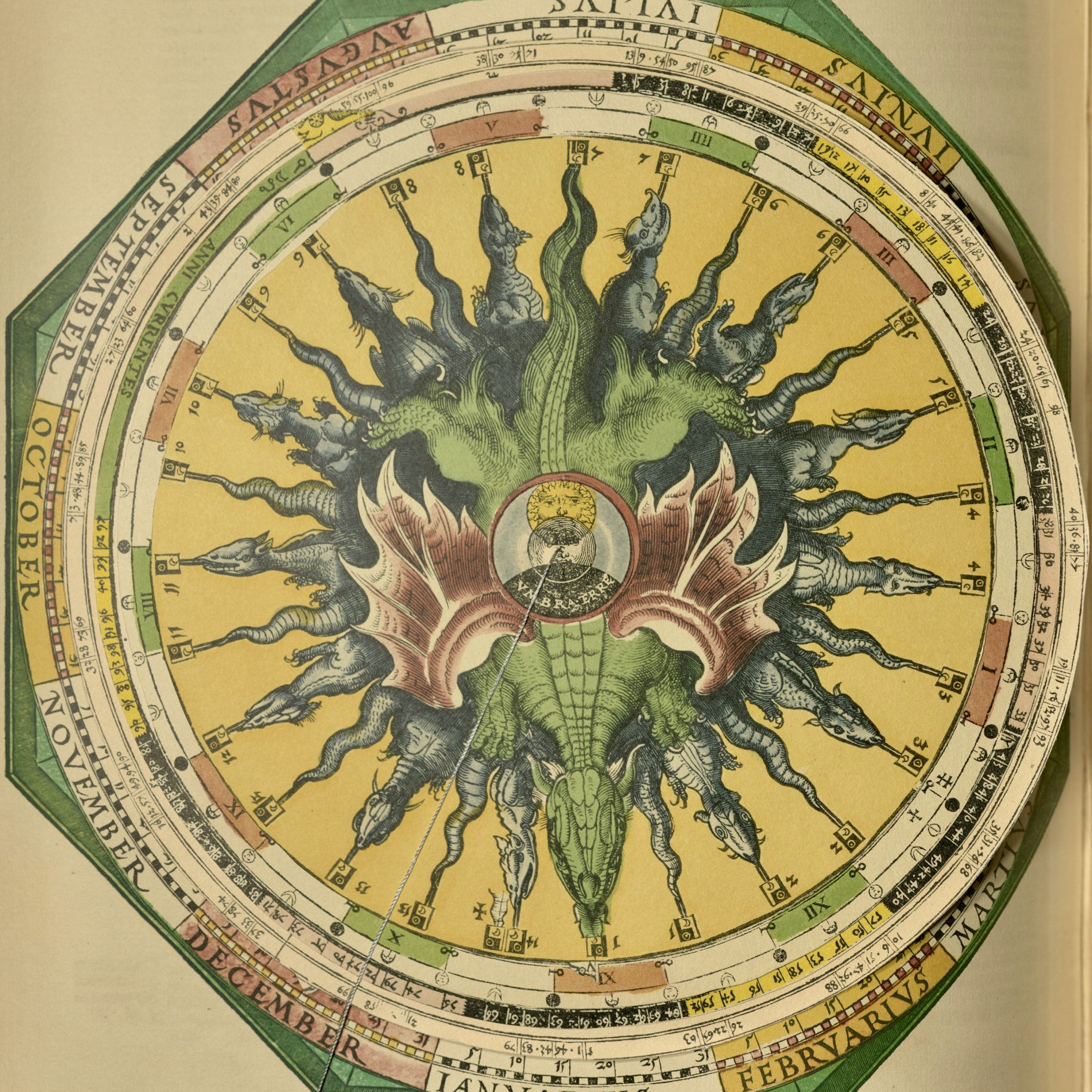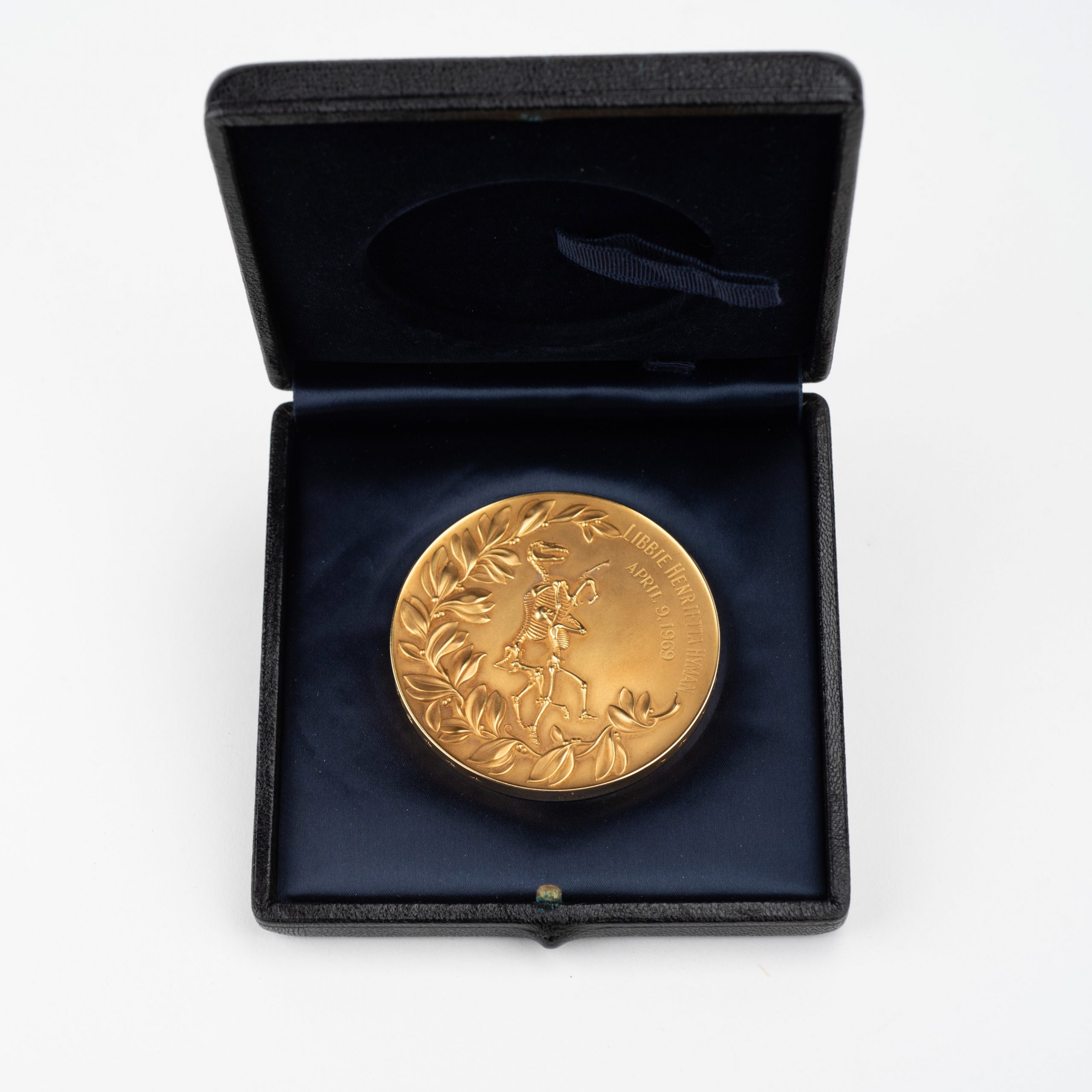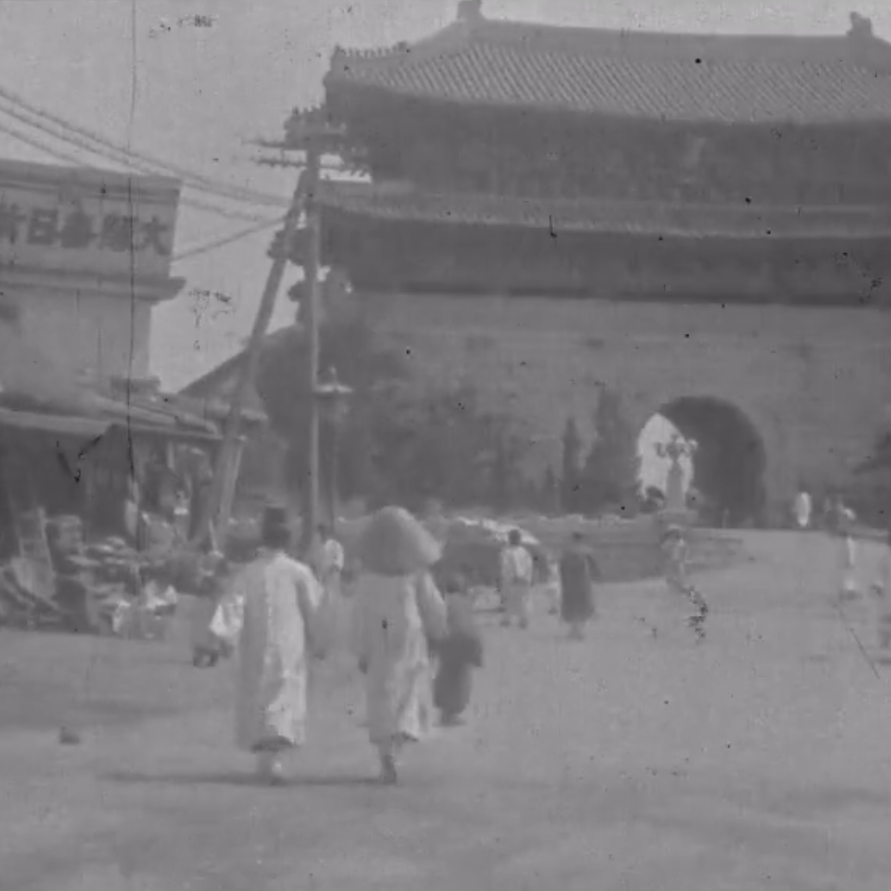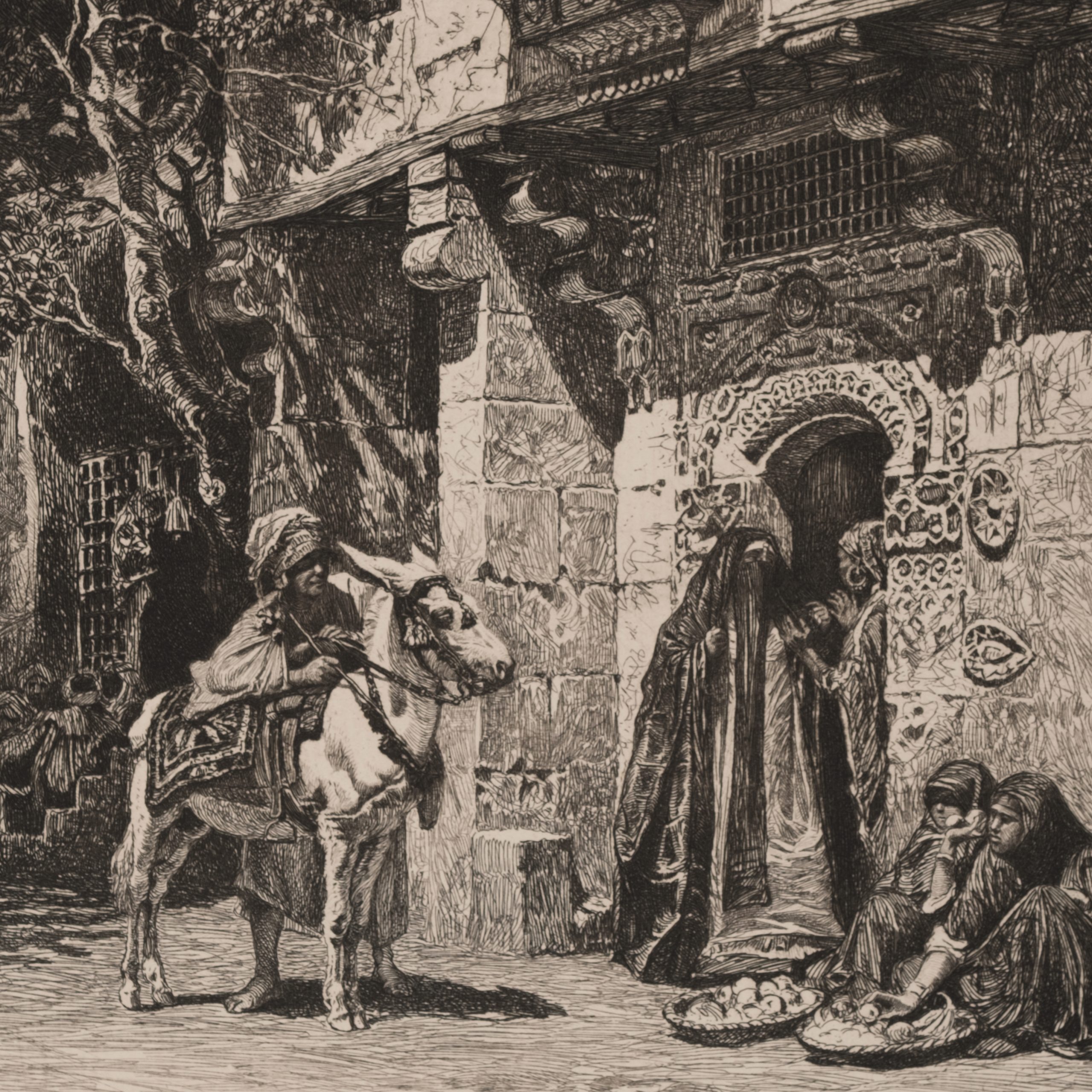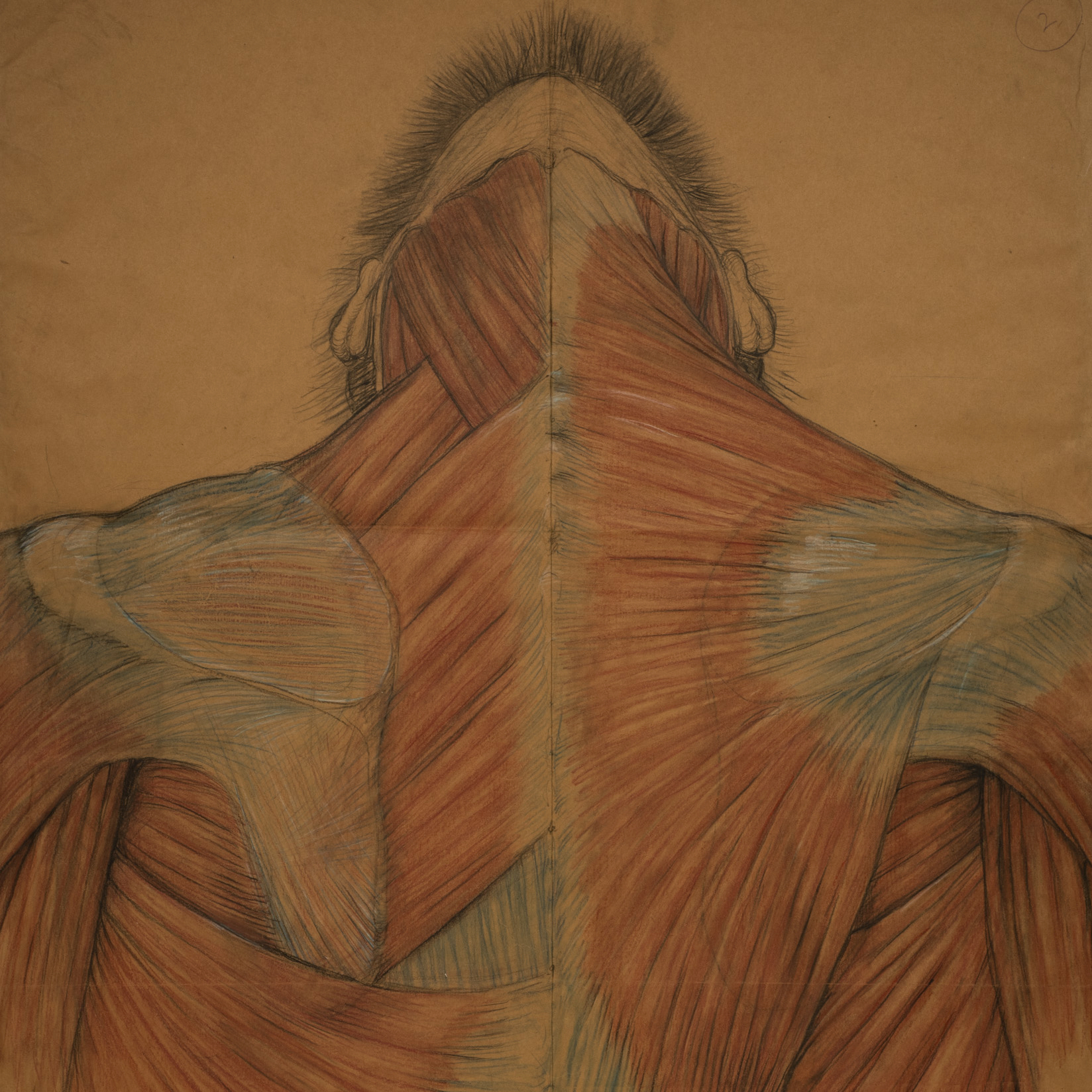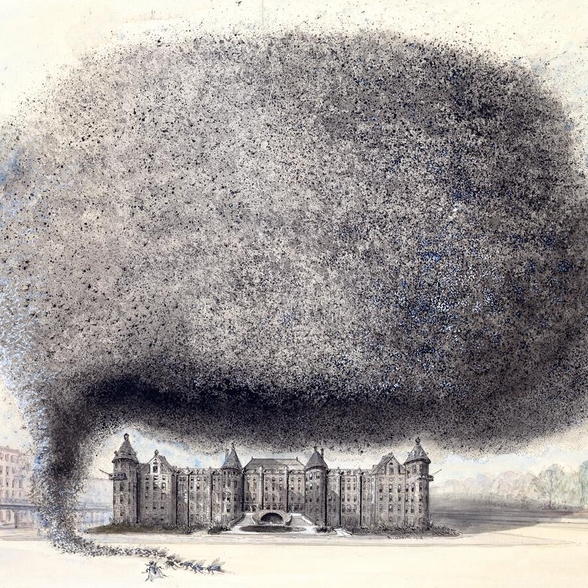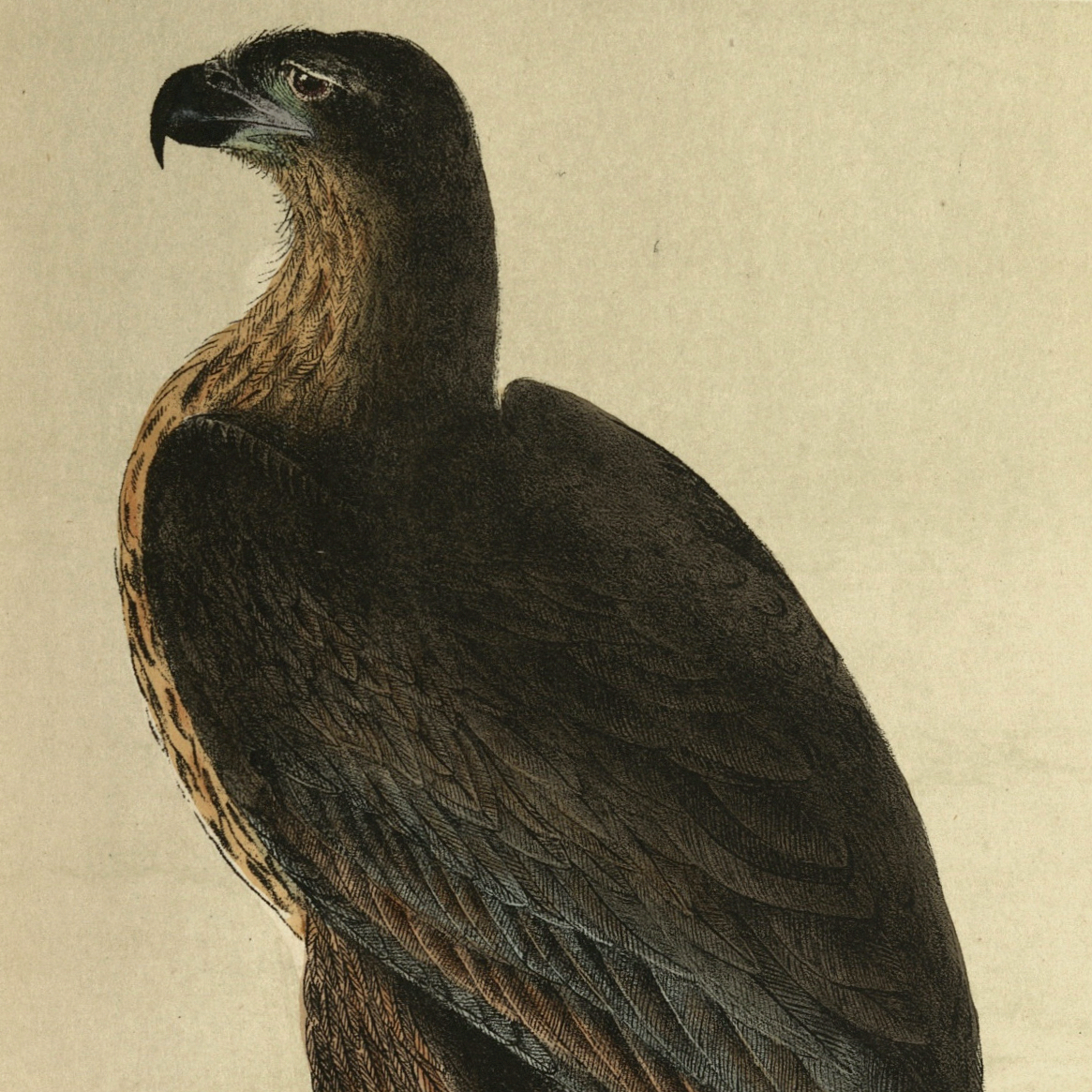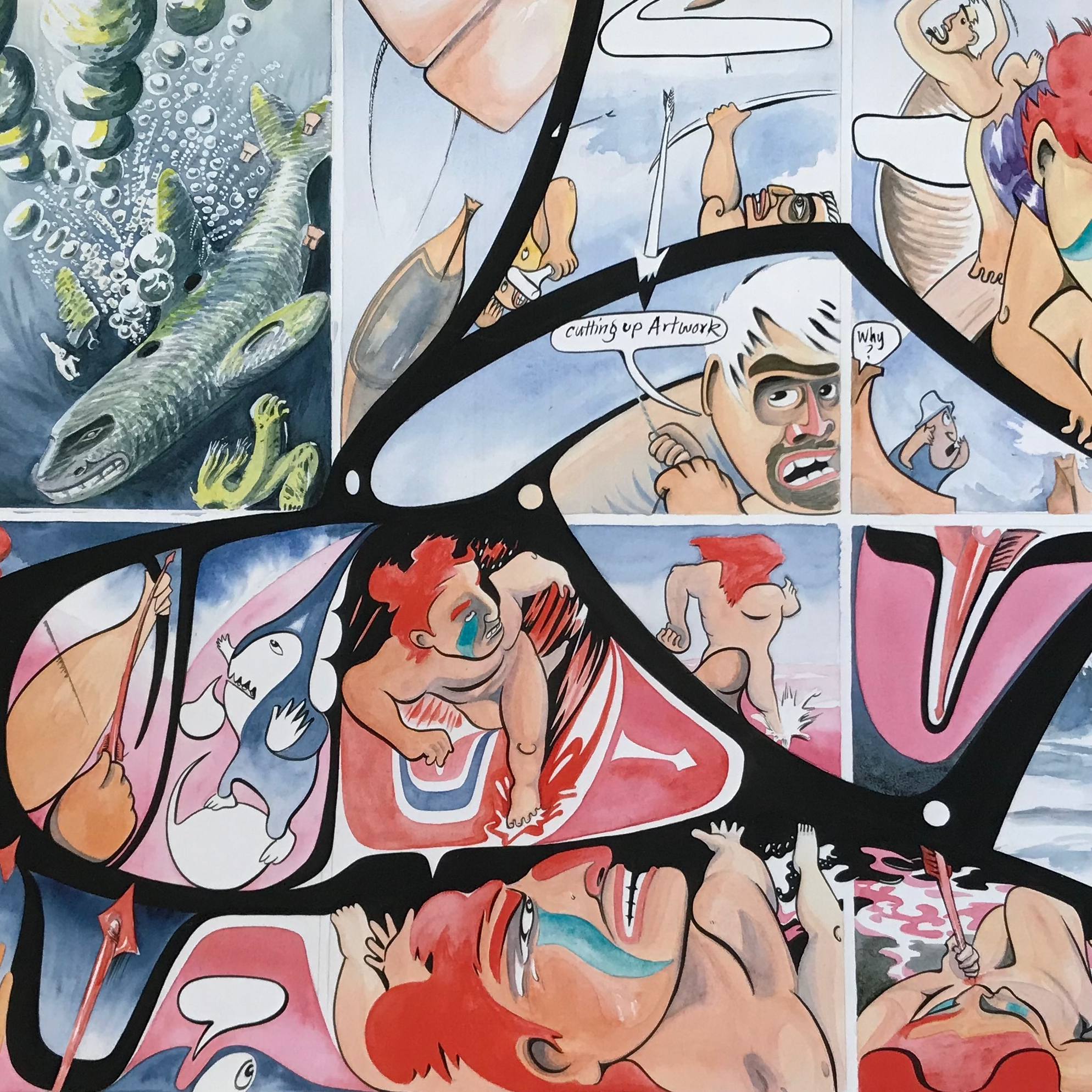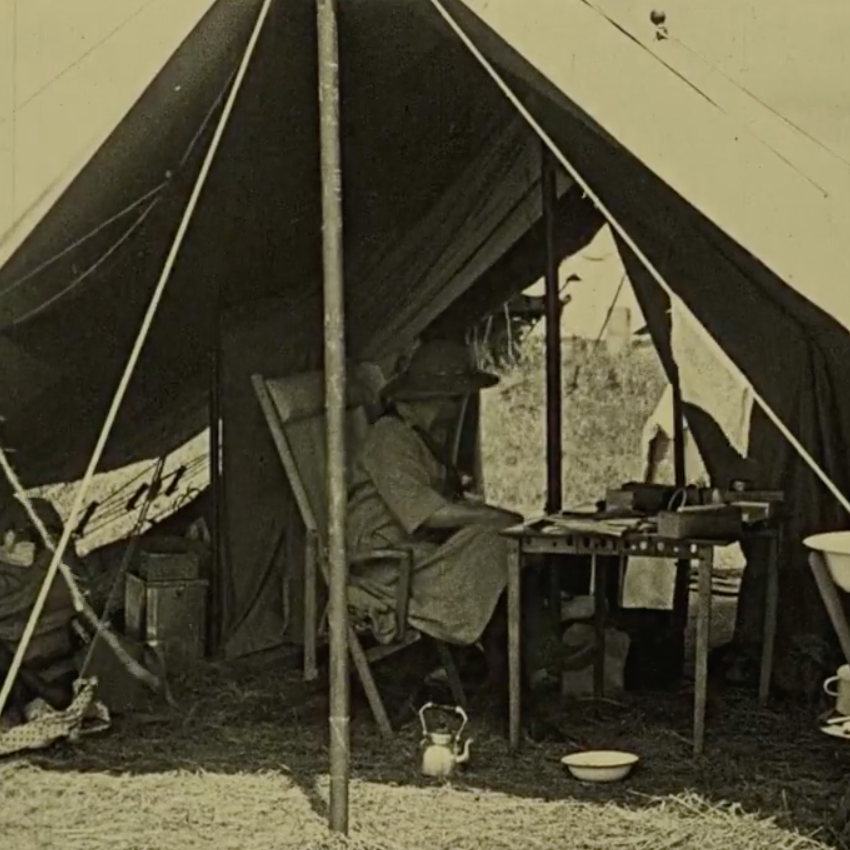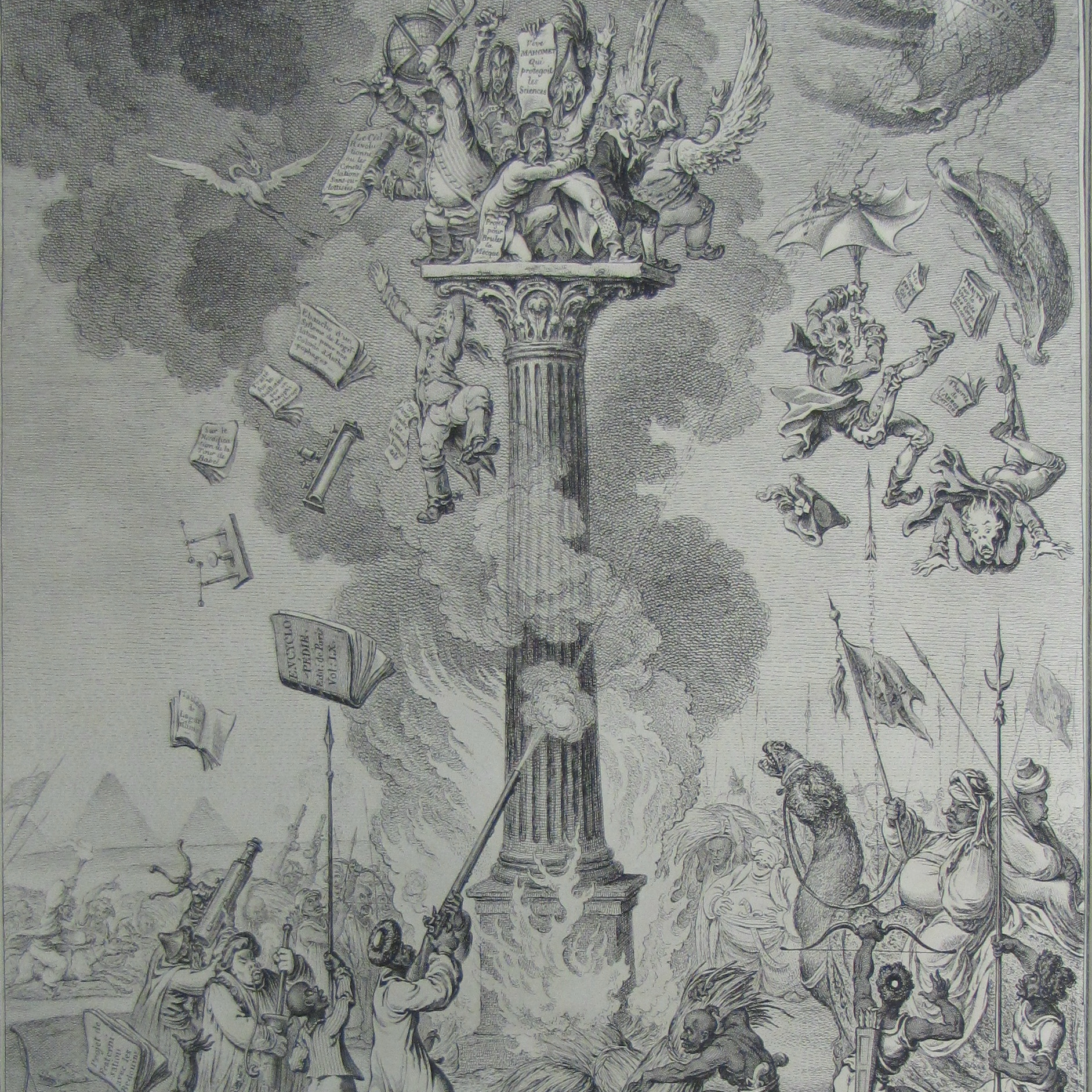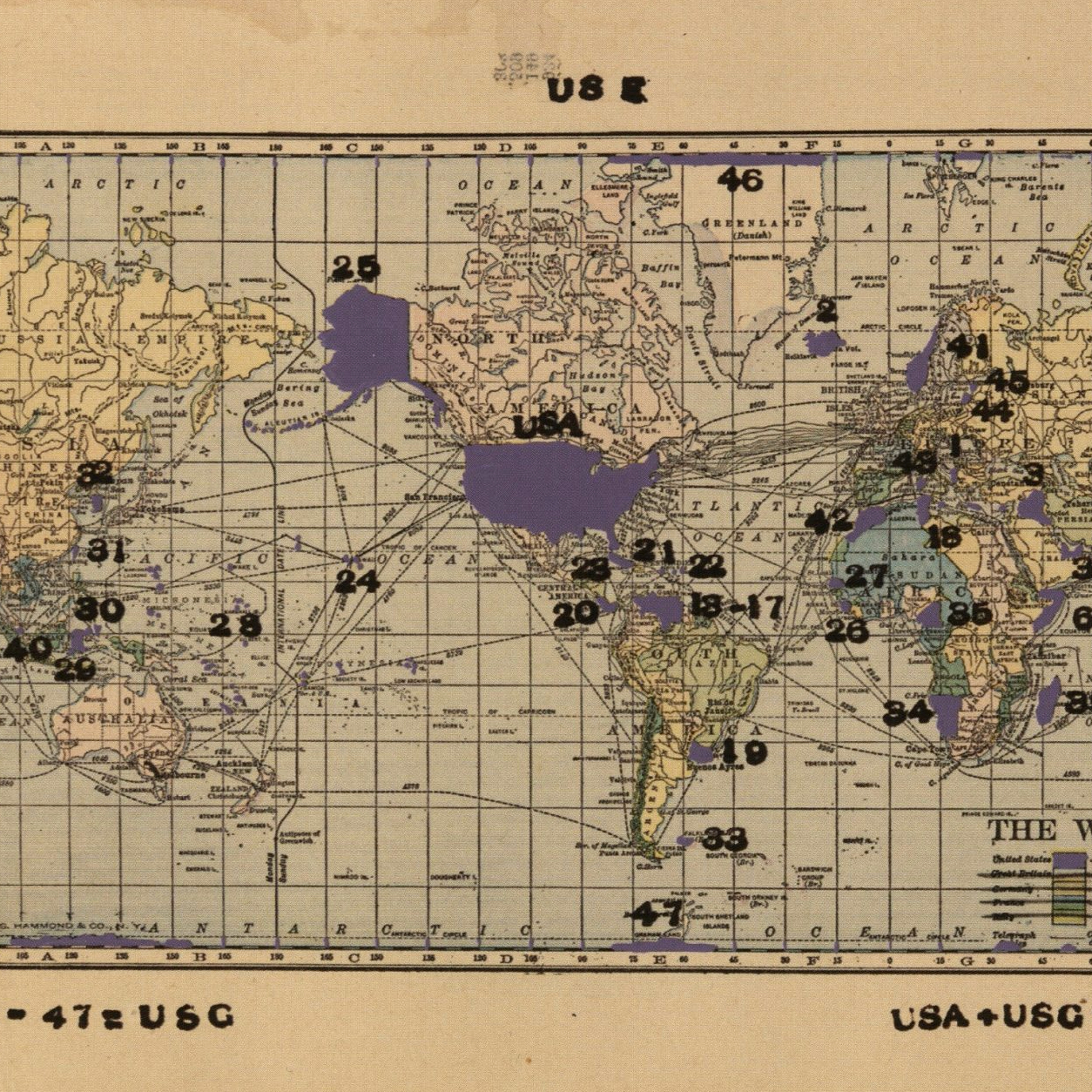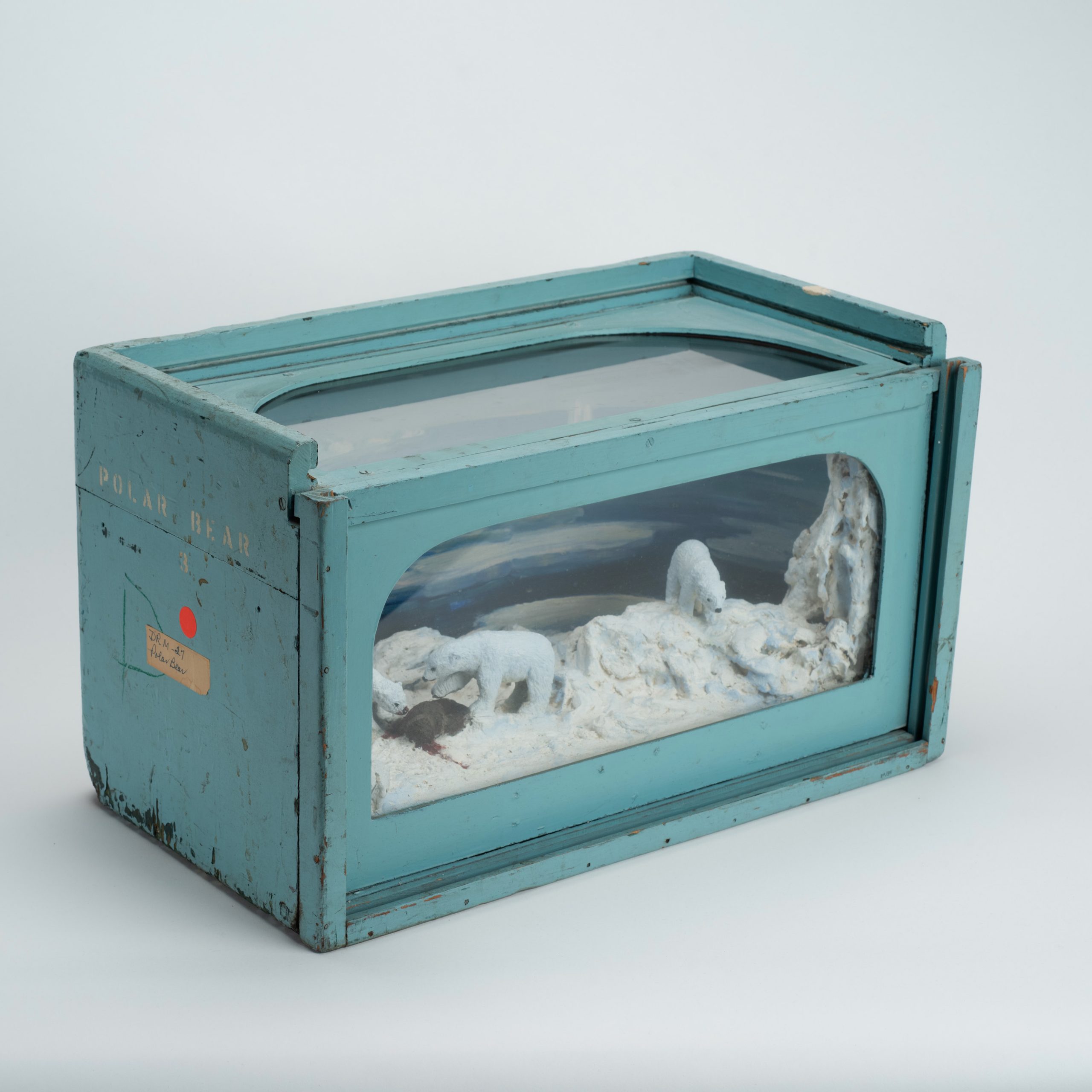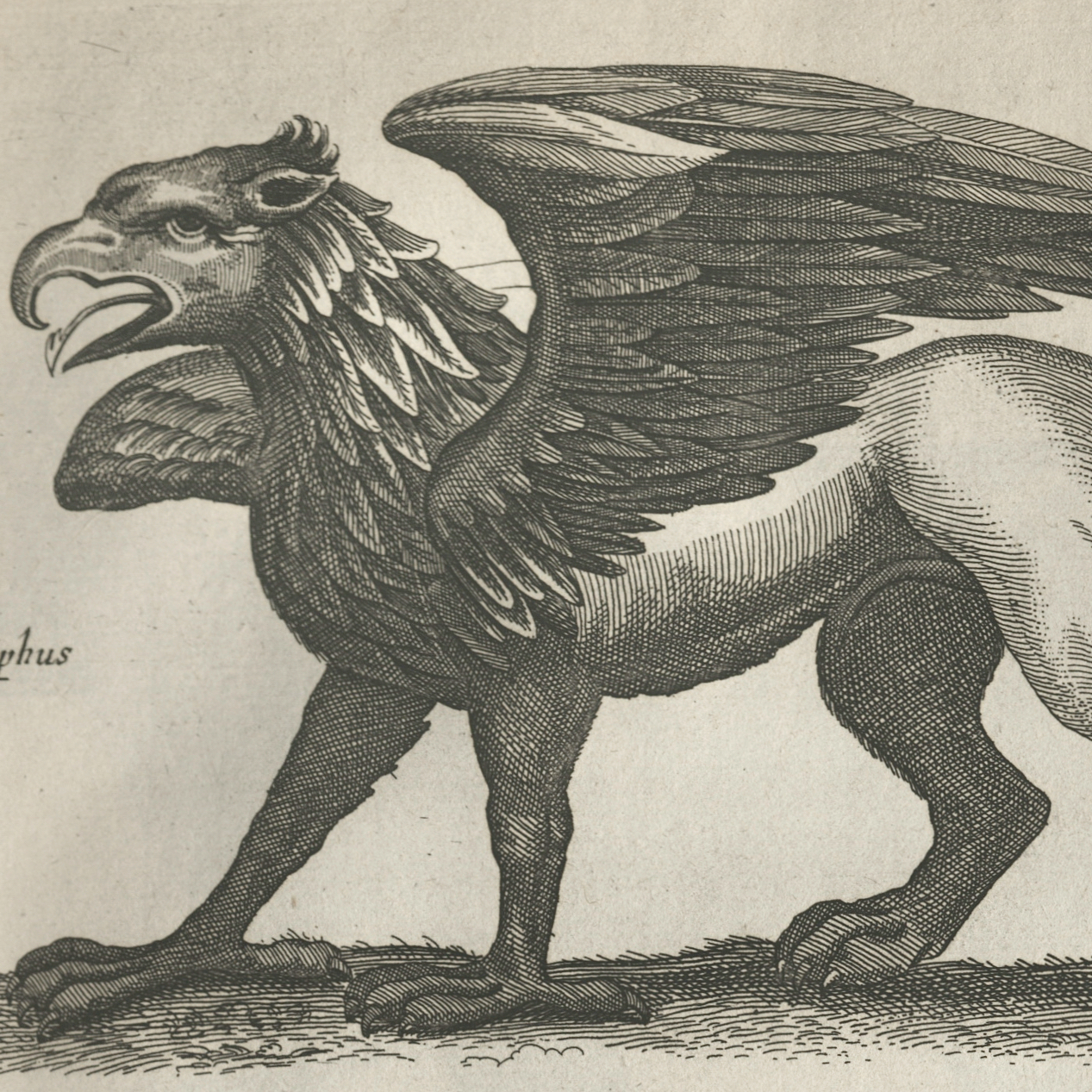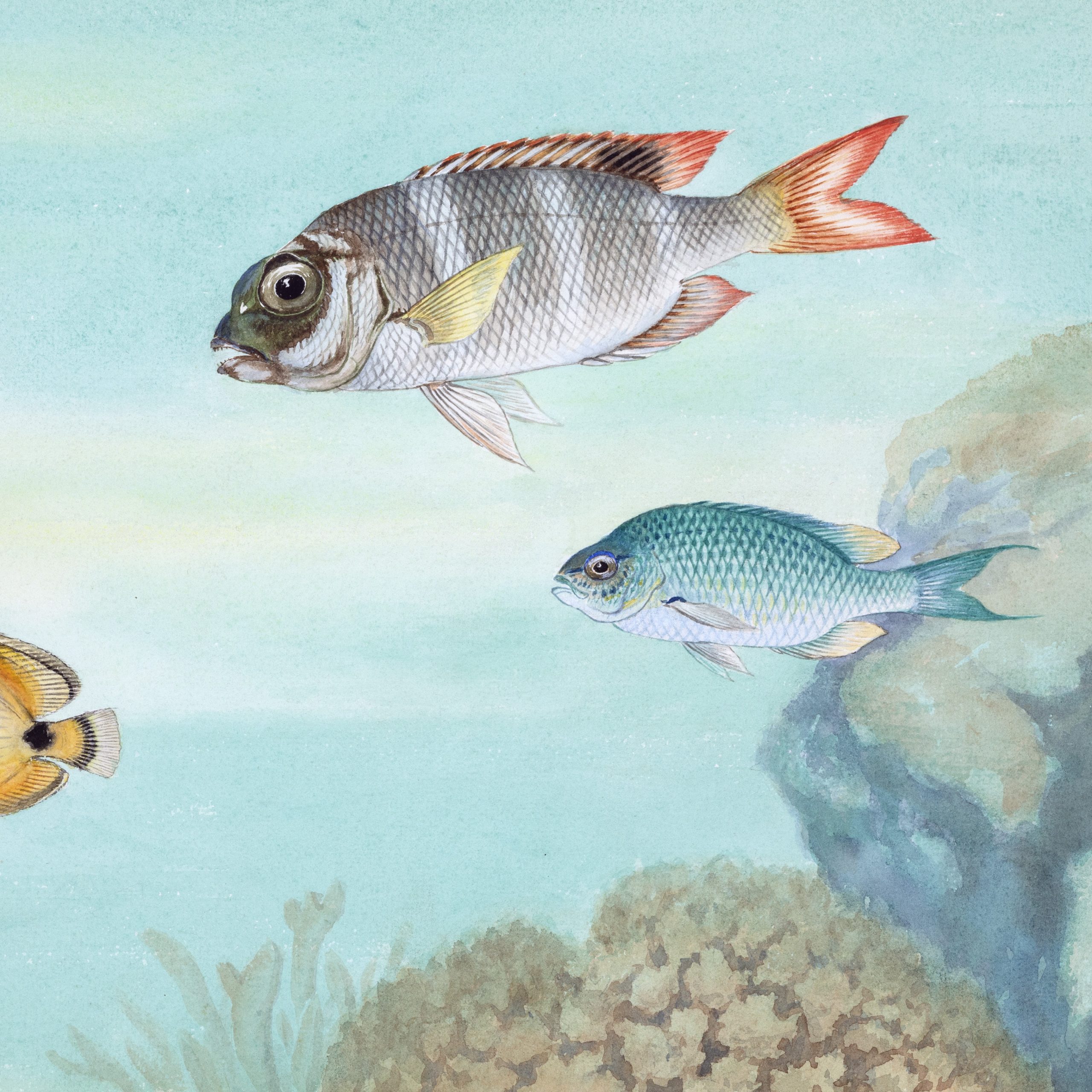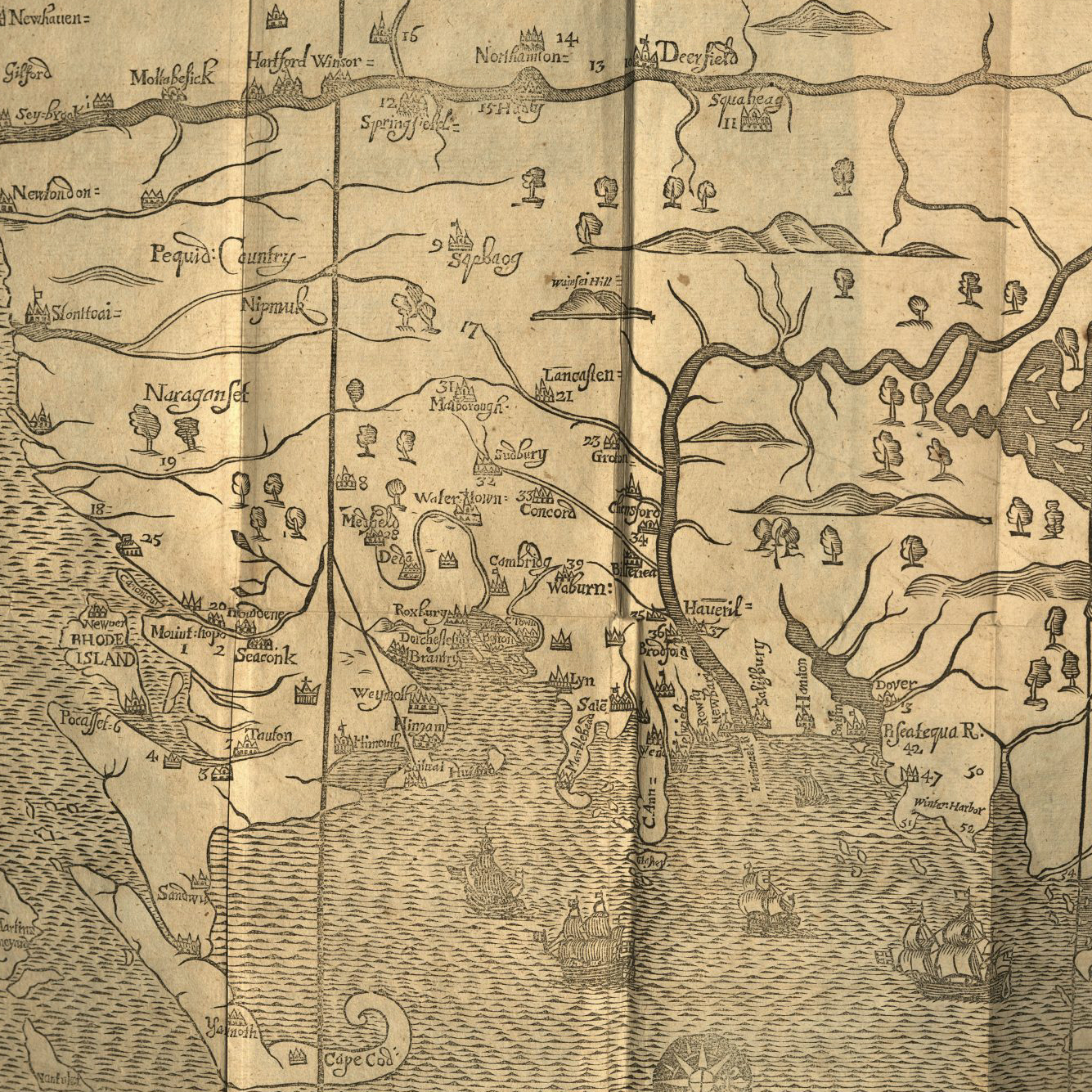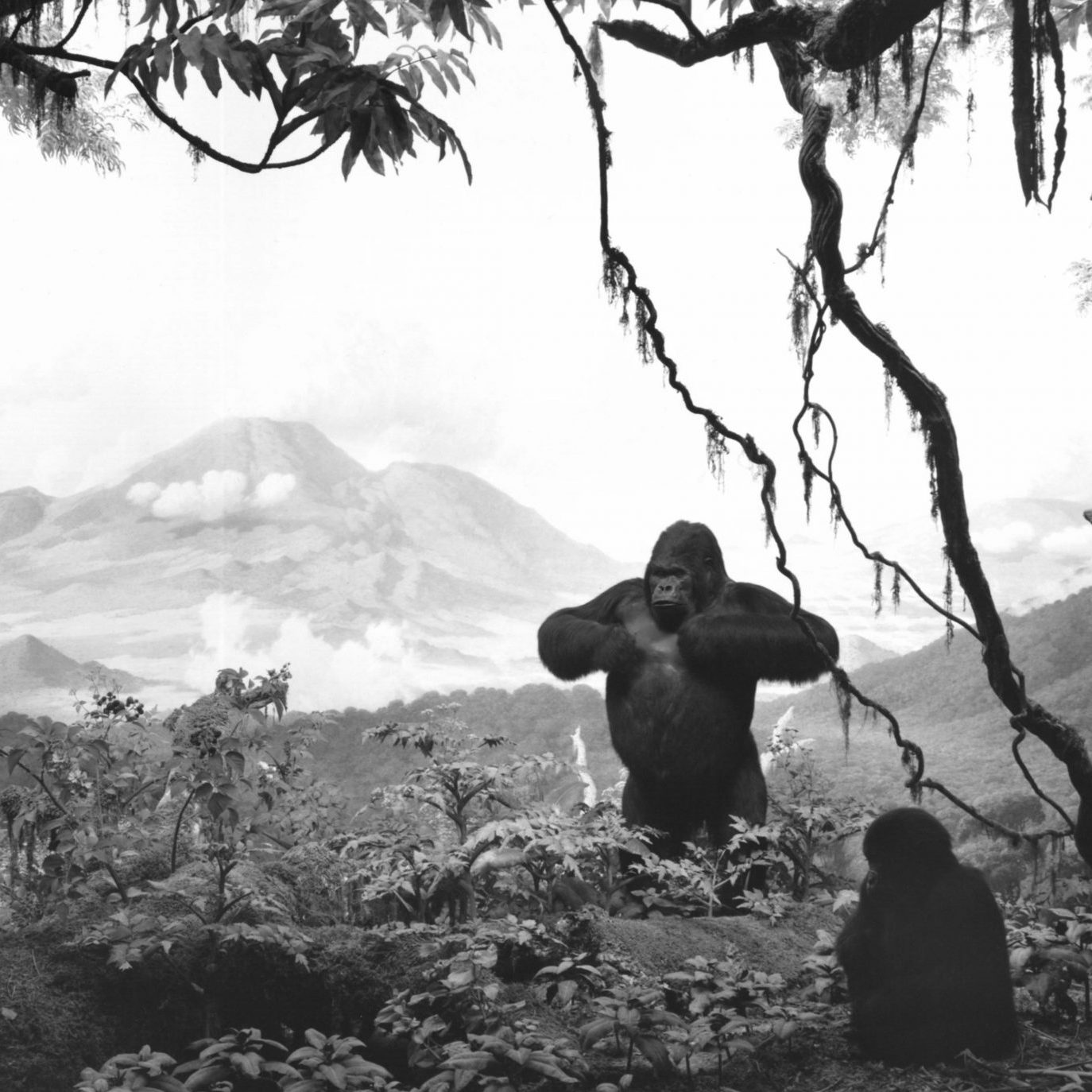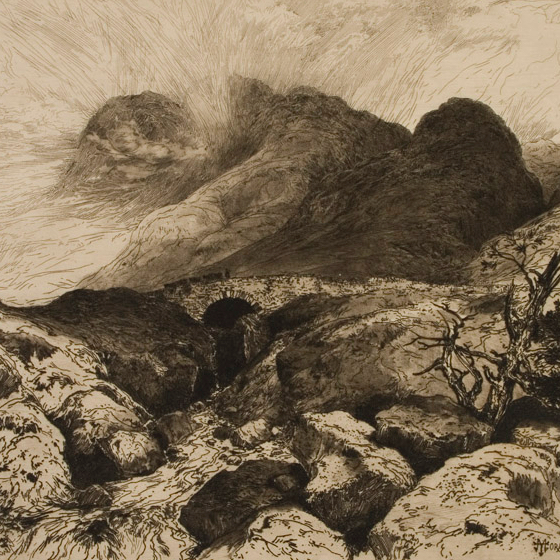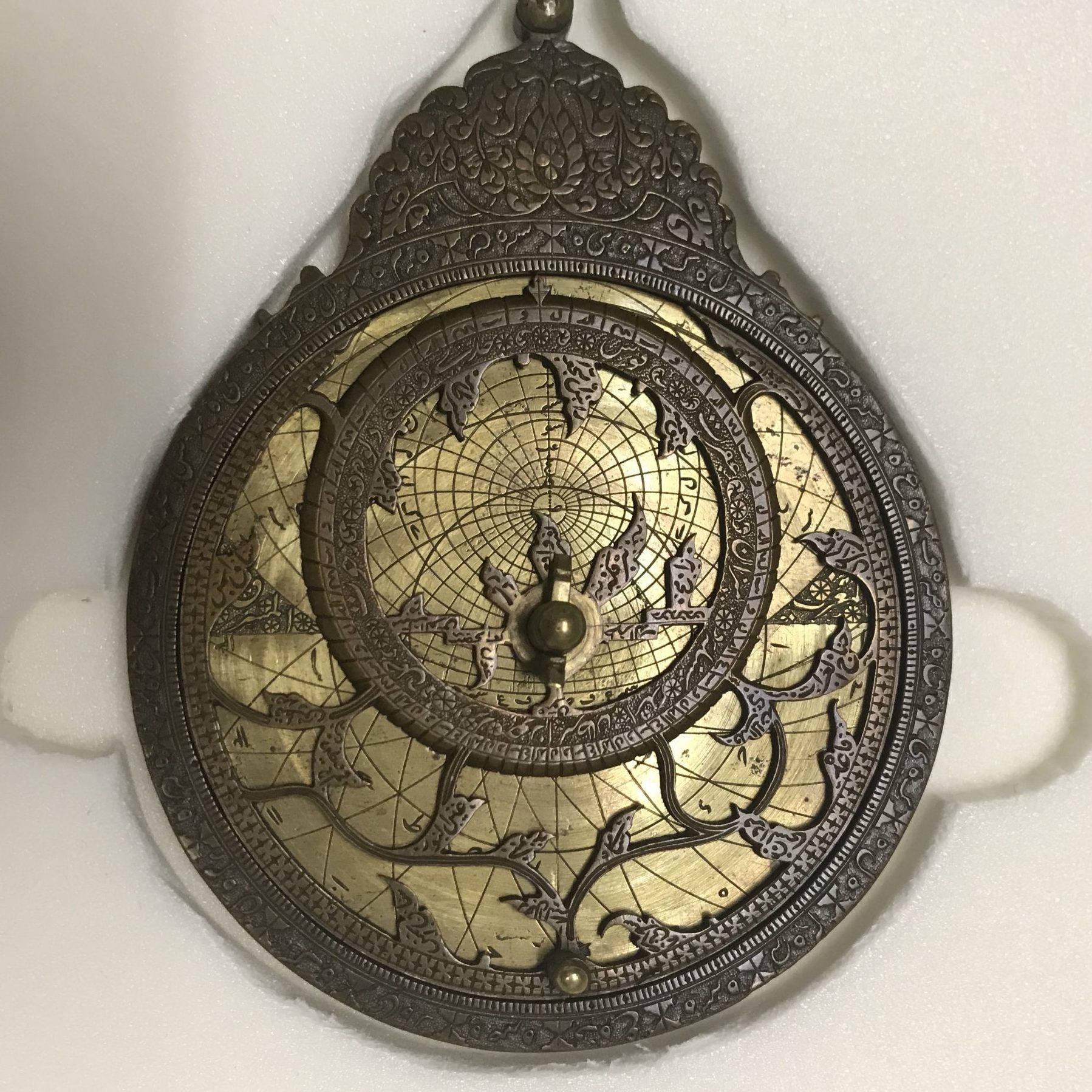
Blazing the Trail to the Distant Past
Arthur A. Jansson, 1890-1960
33 x 33”
LR "Arthur A. Jansson"
Oil on canvas
In ink on the stretcher “Property of NATURAL HISTORY MAGAZINE”.
In ink on paper label on back of frame “Blazing the trail to the distant past”/ Painted by A. A. Jansson/Cover of Natural History/Jan.-Feb. 1929.
"The dinosaur is... much more important as a cultural object than as a scientific entity. If it were not for popular fascination, dinosaurs would probably have disappeared from scientific discourse in the nineteenth century."
As the above quote from scholar W. J. T. Mitchell reminds us, sometimes a dinosaur isn’t just a dinosaur. Dinosaurs are, of course, real biological creatures that roamed the earth in a multitude of variations, and while most disappeared, bits and pieces of dinosaurs are all around us: in the lived bodies of birds and other animals, in bones in the ground, and of course, on TV screens, books, movies, and in museum halls.
Dinosaurs have always meant visitors and money for museums. Therein lies the tension. On the one hand, museums such as the AMNH have had paleontologists on staff for over a century studying fossils and building our collective knowledge about how dinosaurs lived, what the earth looked like, and how such an incredible diversity of dinosaurs evolved.

George Olsen (left) and Roy Chapman Andrews (right) inspecting an even dozen dinosaur egg nest, Mongolia 1925, Photographer James B. Shackelford.
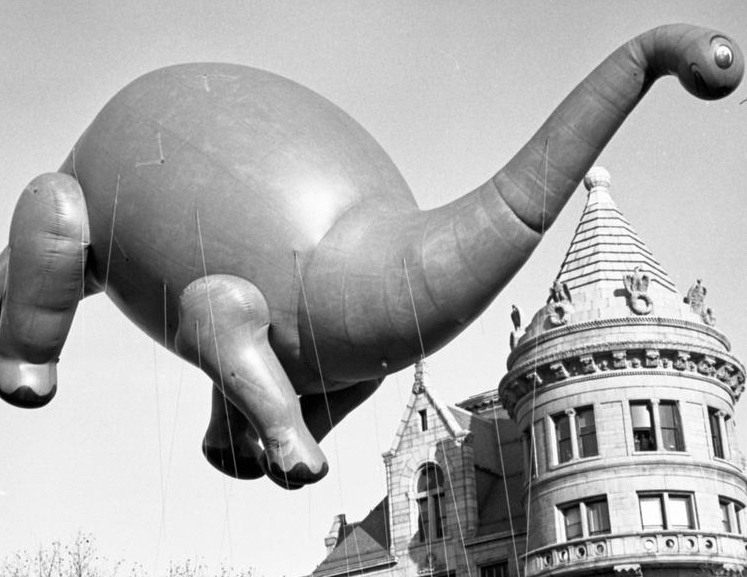
Sinclair's dinosaur balloon Dino the Dinosaur, parade balloon, floating past the AMNH turret, November 1969, Photographer Florence Stone.
Expeditions and digs, however, are expensive and time consuming, and they require a lot of person power. It is equally expensive and laborious to study the bones once they are pulled from the ground. As important as this research is, it is also important to get the public to want to see dinosaurs in the museum and maybe even buy some dino-swag on their way out. Thus, the museum has to do a very complex and delicate dance, promoting one version of dinosaurs to children in hopes of generating income without deteriorating their scholarly mission. Too commercial and too crass, and the museum looks like a joke; too academic, and no one wants to visit.
In a way, Arthur A. Jansson’s Blazing the Trail to the Distant Past tries to parse that thin line. On the one hand, the bottom of the image highlights (and certainly heroizes and dramatizes) the work of paleontologists on a dig. Standing over them and watching their work is the ghostly specter of a lime green dinosaur watching as presumably its bones are exhumed. The piece is whimsical, and certainly not realistic or scientific, but it does try to remind the viewer of the real purpose of these digs and all those dinosaur bones in the museum.
Written by Alexis L. Boylan and Joel Sweimler
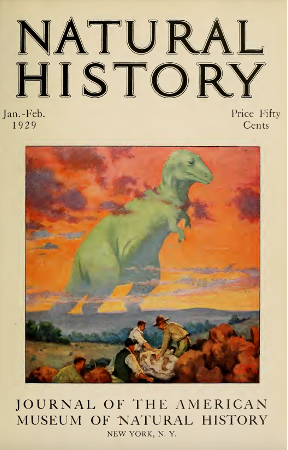
Jasson's painting featured on the cover of the Natural History Journal.
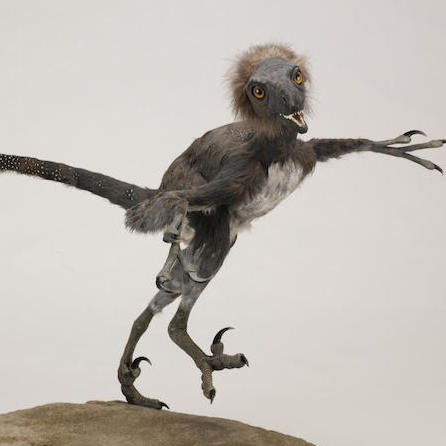
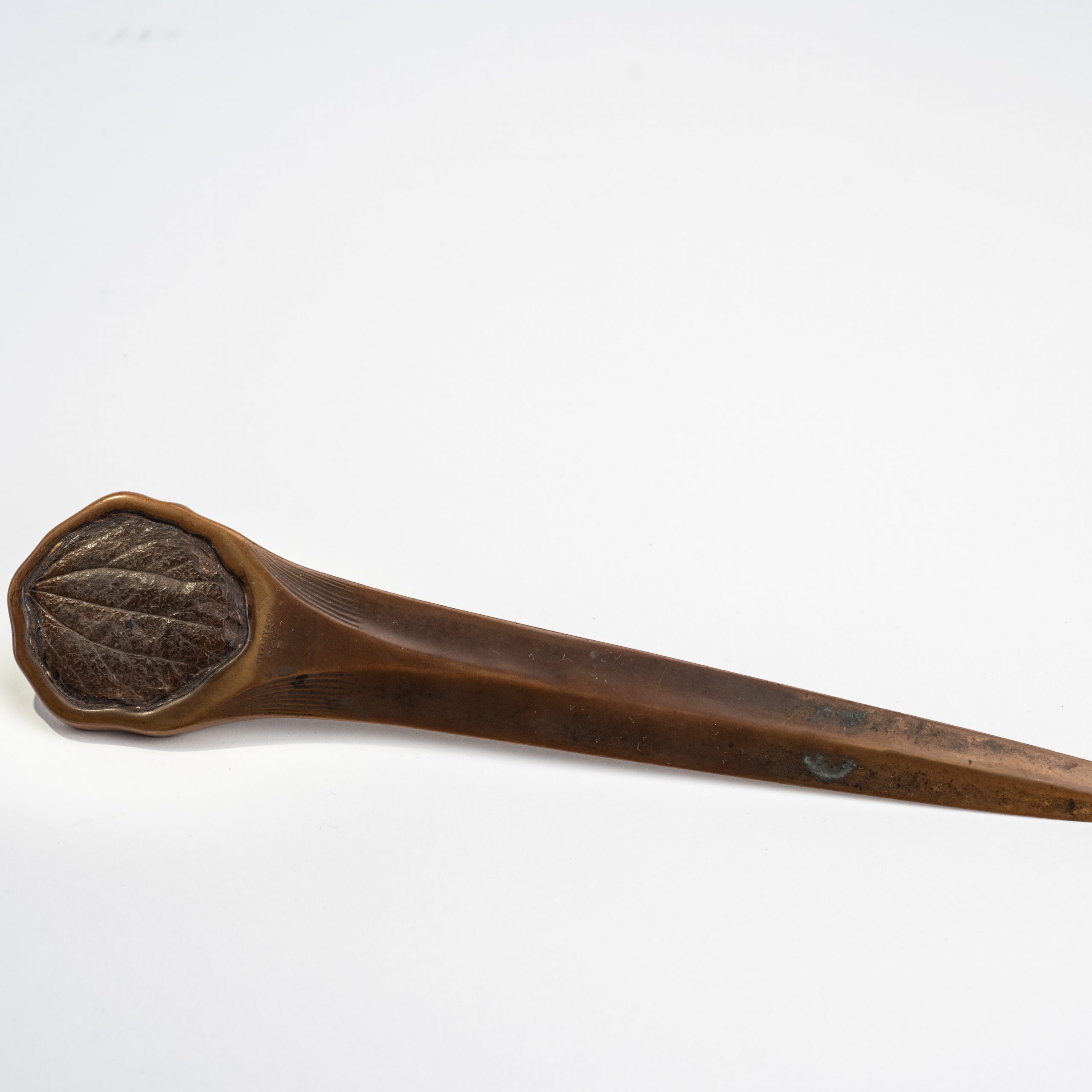

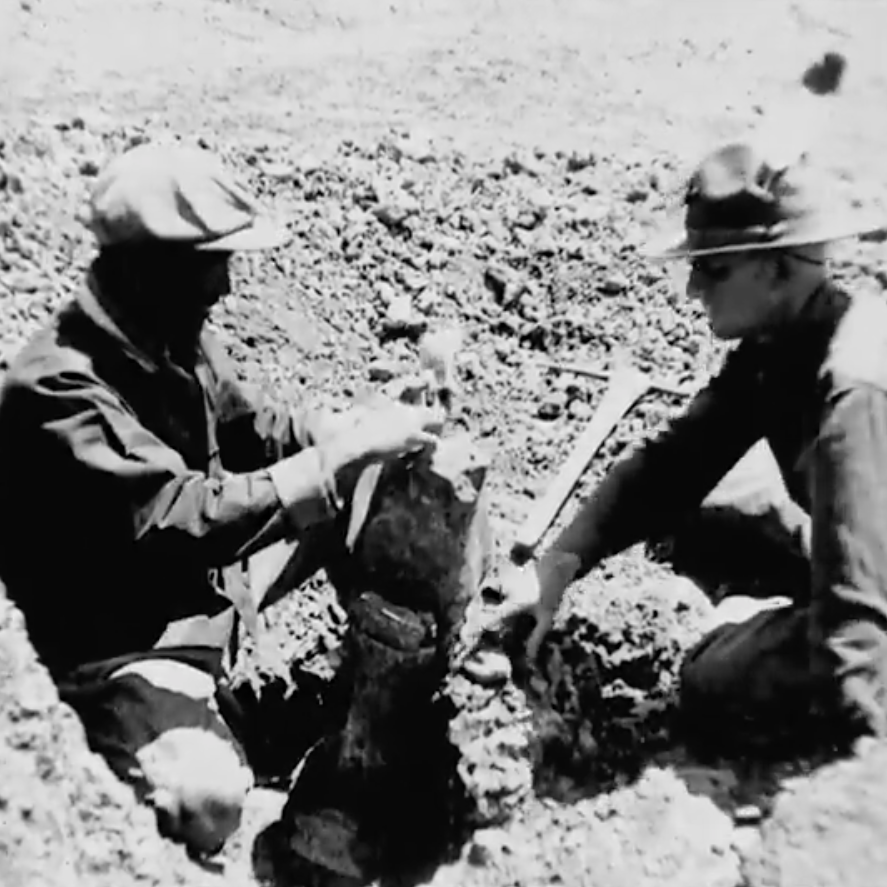
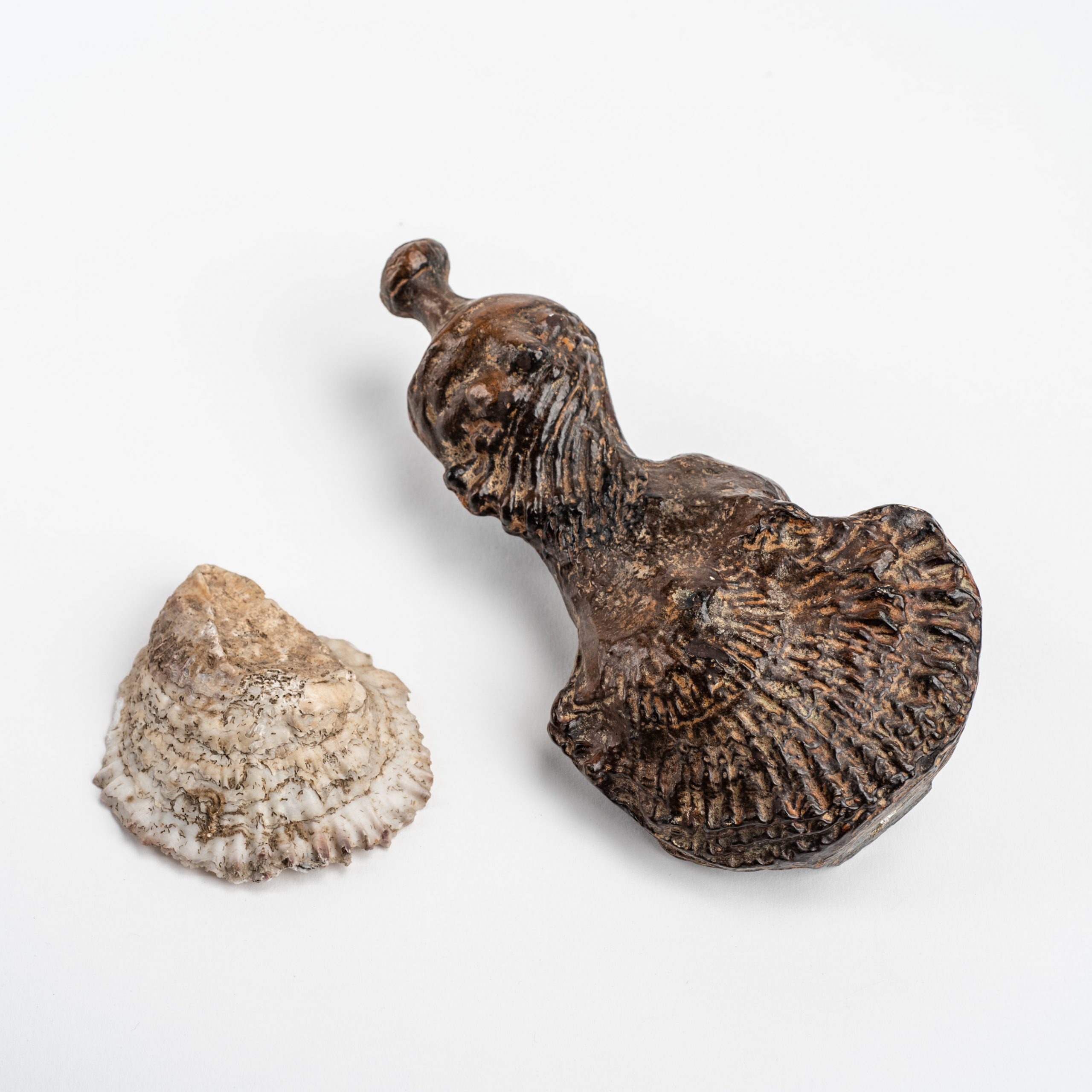
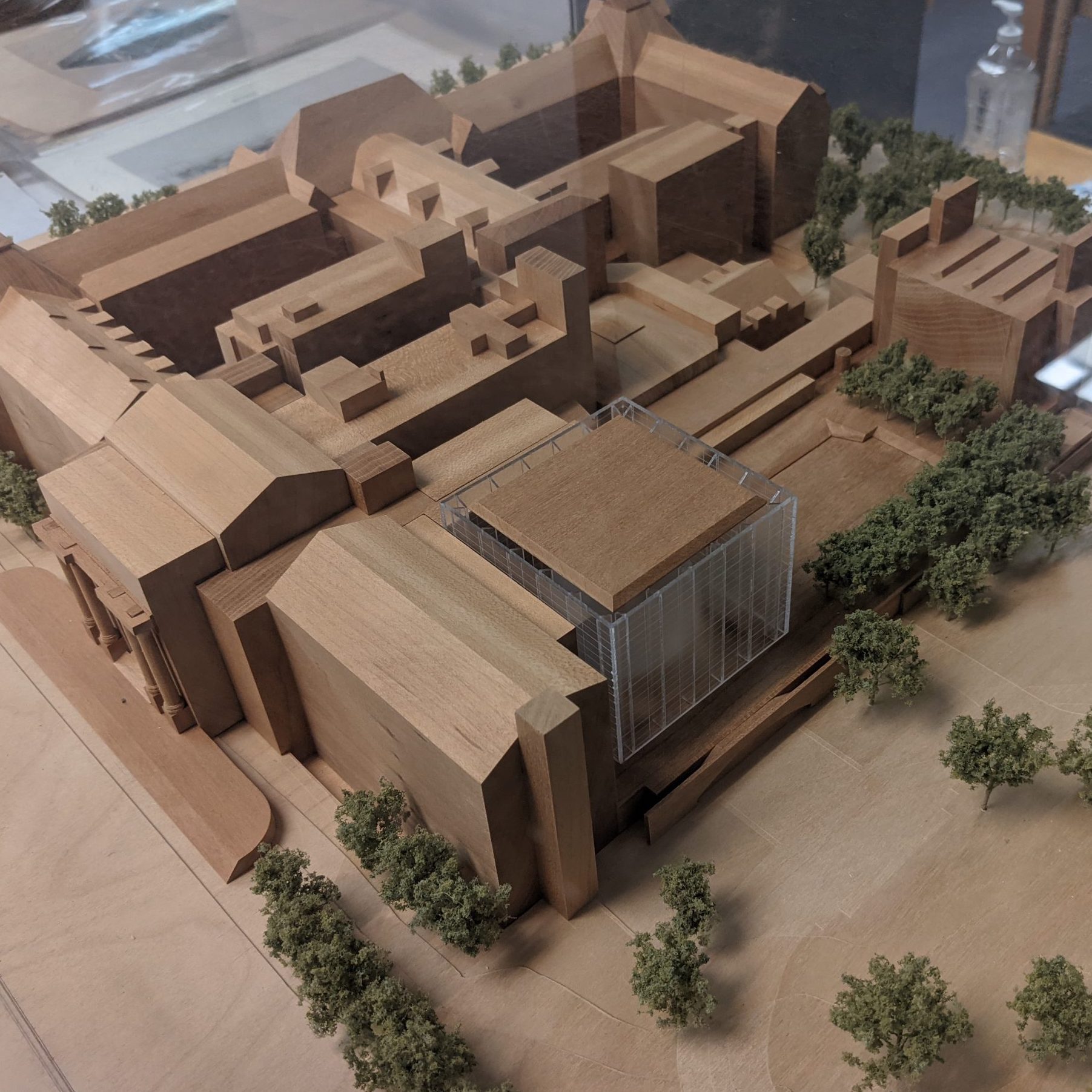
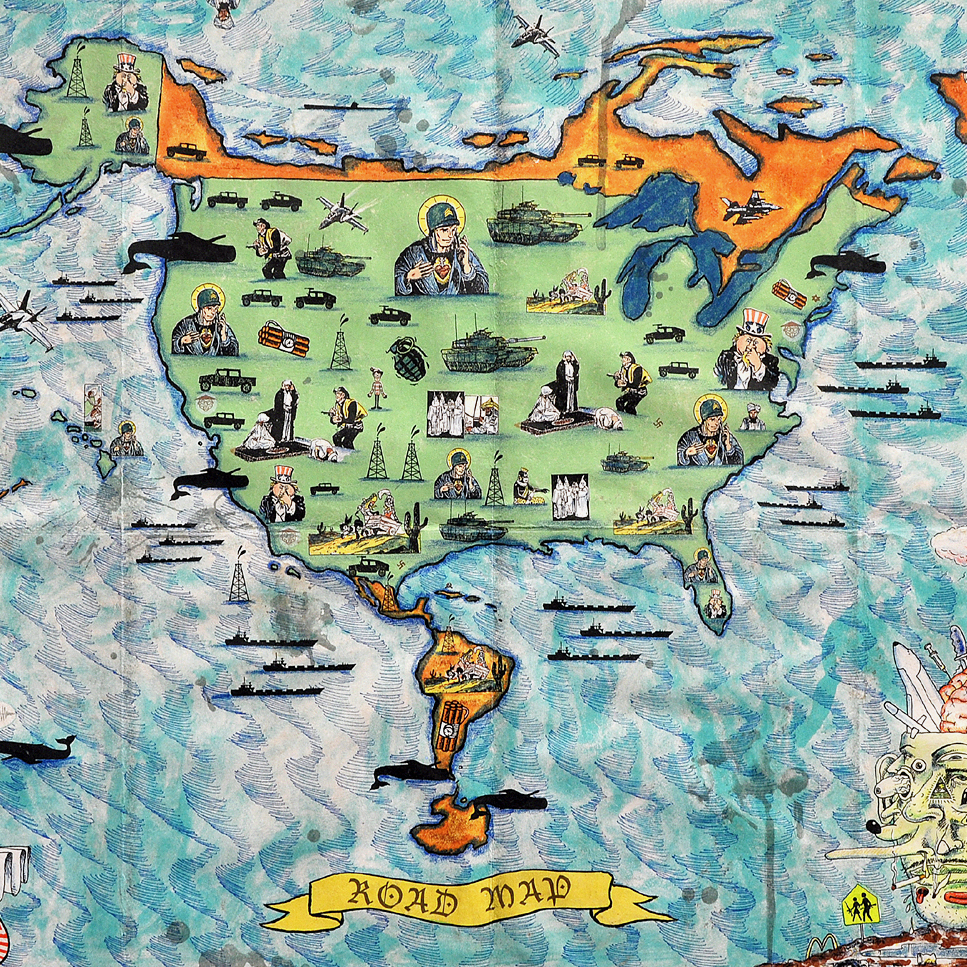
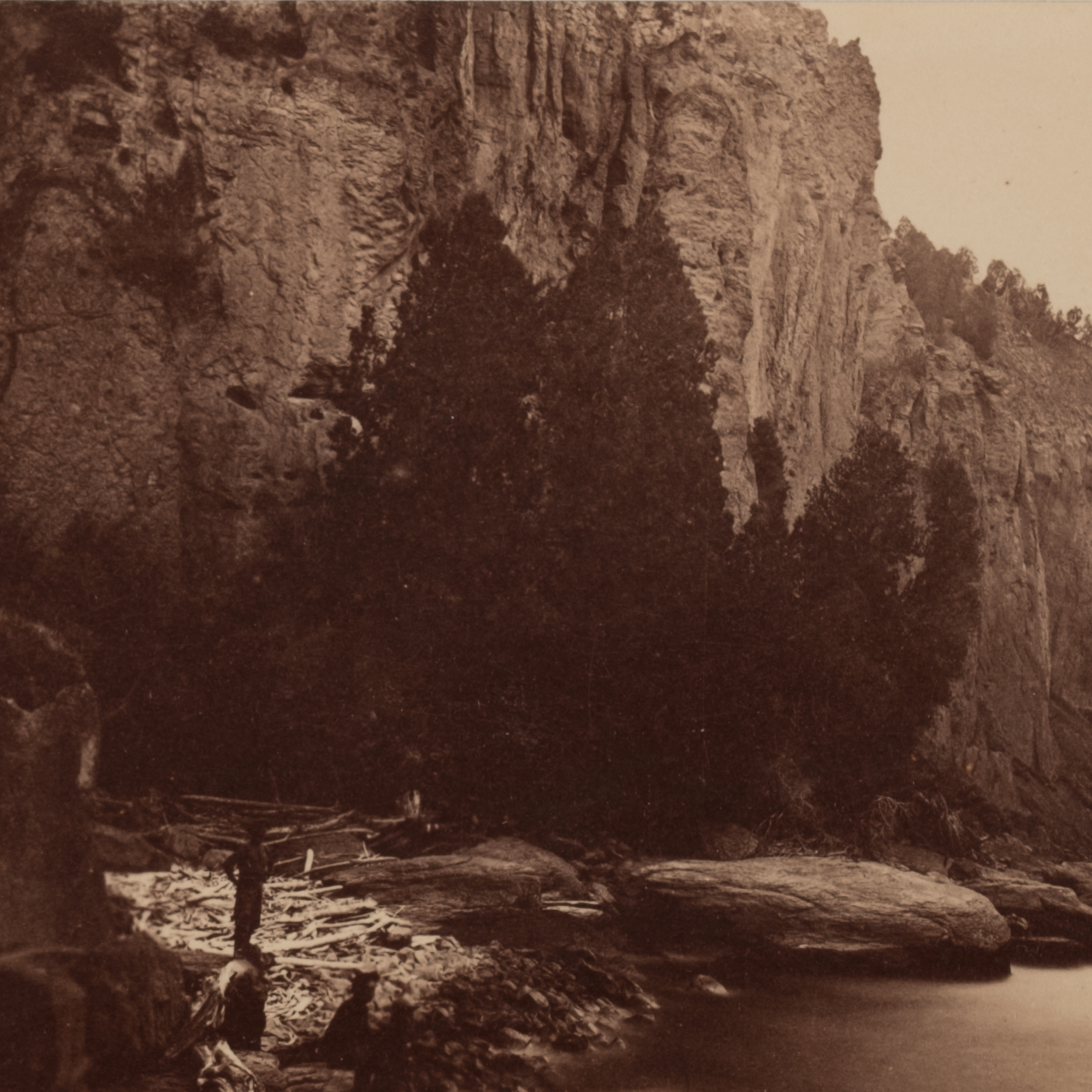
![Howard Russell Butler's [Hydrogen prominences]](https://futureoftruth.media.uconn.edu/wp-content/uploads/sites/2921/2023/01/k6584-square.jpg)

